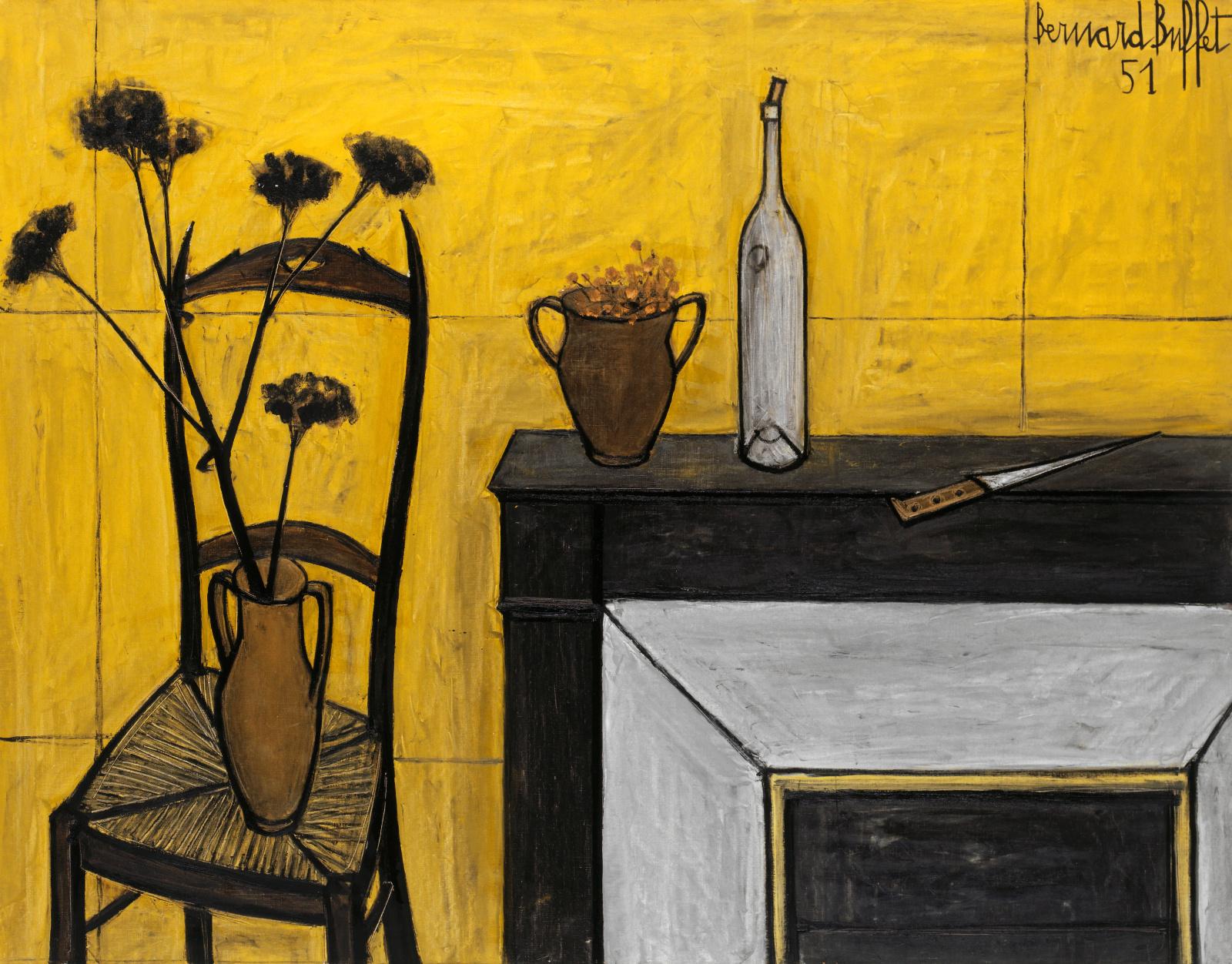Bernard Buffet
Existentialist and Popular Artist
The exhibition Bernard Buffet. Existentialist and Popular Artist in the galleries dedicated to the Im Obersteg Foundation collection at the Kunstmuseum Basel | Hauptbau invites visitors to rediscover the early work of the Frenchman Bernard Buffet (1928–1999). The “painter of existentialism” has long faded into obscurity. In the presentation, his fascinating paintings are complemented by film footage, photographs, and other documents that shed light on a legendary artist’s career and Parisian culture in the postwar years and provide insight into the tales that surround the controversial artist.
Buffet’s art wrestled with the grim aspects of life: death, hunger, and loathing are key themes in his austere still lifes and portraits of emaciated and pallid figures. Aiming to show the tristesse of postwar Paris, he developed an unmistakable personal figurative style. Thanks to his compelling public persona, skillful marketing, and his collaboration with the gallery owner Pierre Bergé, who was also his partner at the time, Buffet made a splash in the art world. Leading Parisian art dealers and collectors regarded him as the new Picasso of the postwar era. The yellow press reported extensively on his life and career, and his homes were featured in stories lavishly illustrated with photographs.
The young artist’s meteoric success soon made him a very wealthy man. Still in his twenties, he was a celebrated pop-star artist and, with Brigitte Bardot, Françoise Sagan, Roger Vadim, Yves Saint Laurent, and others, a member of France’s high society. But the boom around him soon fizzled. His works were now dismissed as kitsch and vacuous. The artist who painted misery while posing for the camera in front of his palatial properties was no longer taken seriously.
In today’s perspective, we can consider his output with fresh eyes and discern a distinctive quality in the conjunction of existential subjects with a formulaic and stereotyped painting style: Buffet was one of the first popular artists who captured the attention of large public audiences thanks to the brand recognition of his work and honed the public image of the pop-star artist. Familiarity with existentialist thought can help us understand his pictures, but they deserve to be seen as more than mere illustrations of ideas. Rather, his paintings and his public appearances bear witness to a fast-paced subculture in which the confessional register and convention, glamour and pop entered into a peculiar coexistence.

